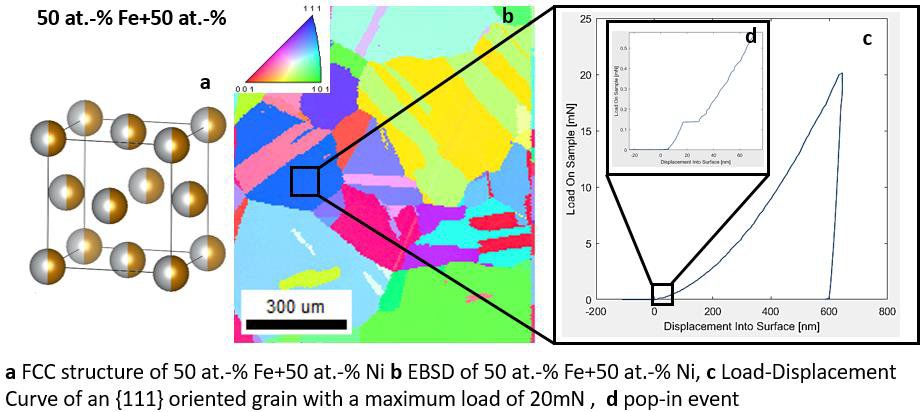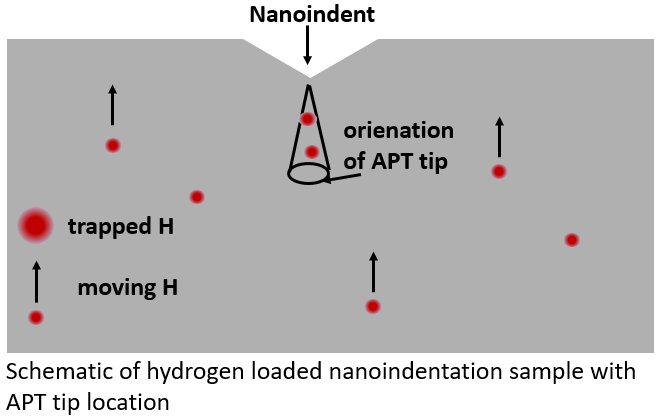
Hydrogen Embrittlement in the Fe-Ni-System
In this project the influence of hydrogen on the mechanical behaviour of iron-nickel alloys is investigated by in-situ nanoindentation during hydrogen load and atom probe tomography (APT) of the hydrogen influenced areas.
One of the big tasks of our time is to become carbon neutral as soon as possible. To reduce the amount of carbon based fuels burning of hydrogen seems to become an important part of this task. Today it is already possible to buy engines that can be run by hydrogen. The hottest parts of engines are often made of nickel based superalloys. These alloys contain iron for solid solution strengthening. Thus the mechanical behaviour of Ni-Fe alloys and its influence by hydrogen is of great interest in industry.
In this project three materials out of the Fe-Ni-system (2 at.% Ni, 50 at.% Ni and 100 at.% Ni) are chosen for nanoindentation-testing with and without hydrogen load. The indents are set in the middle of large grains with known grain orientation in {100}, {110} und {111} planes. This is of special interest because engine blades made of Ni superalloys are often single crystals and different crystal orientations in FCC materials are estimated to behave differently under nanoindentation and hydrogen load by molecular dynamics modelling.
Hydrogen can cause many changes in the materials behaviour such as influencing the bond energy of the alloy atoms (HEDE) or reducing the mobility of dislocations (HELP). Thus hydrogen embrittlement is a name for many different mechanisms taking place at the same time. The difficulty in detecting the influences of hydrogen lies in the small size of the hydrogen atom. Therefor the deformed and H - loaded areas beneath the indent are analysed by APT as it is the only microanalysis technique to directly observe H in three-dimensions at the near atomic-scale.















